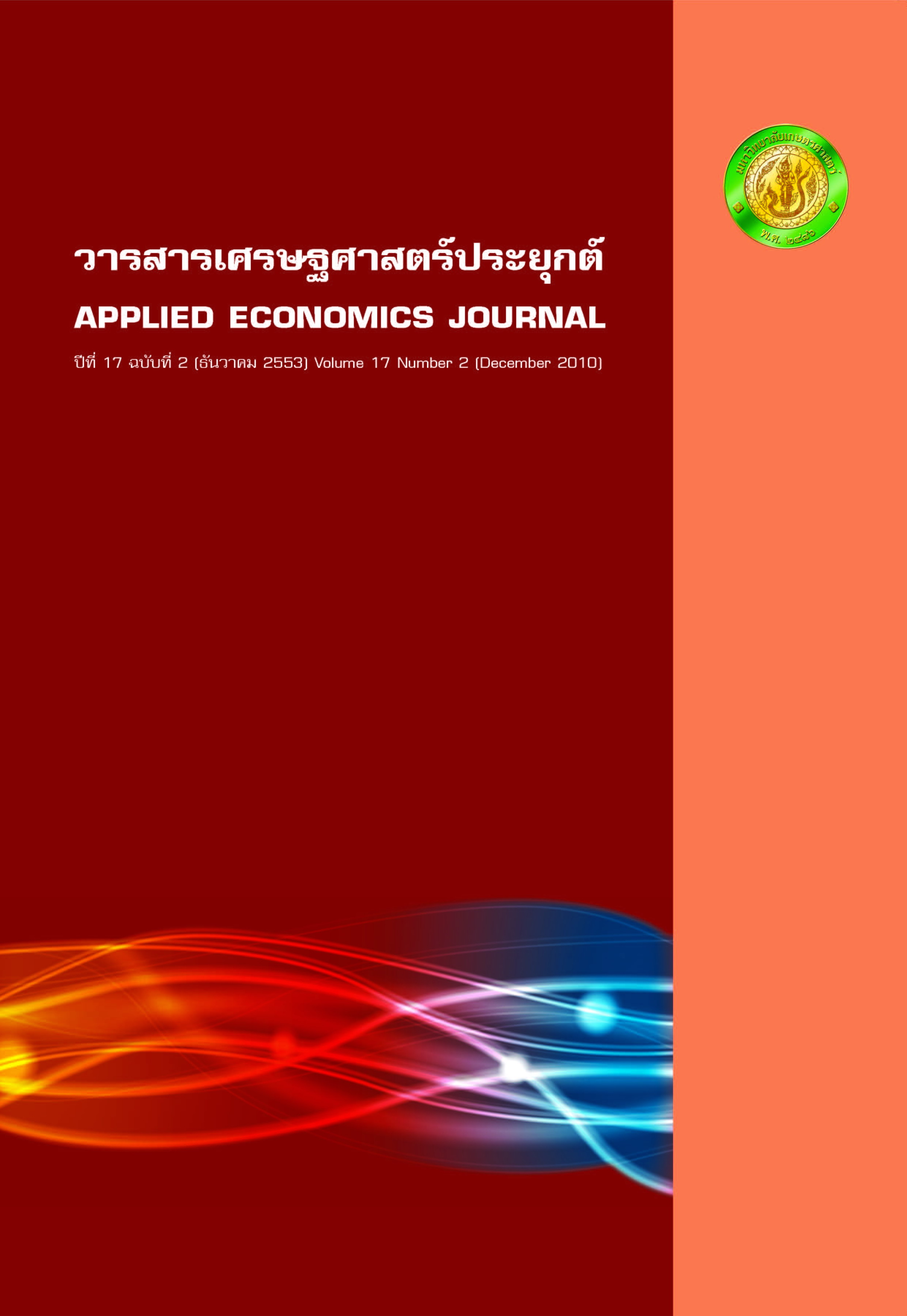Spending for Growth: An Empirical Evidence of Thailand
Main Article Content
Abstract
Abstract
This article analyzes the dynamic effects of proportional change in government spending on Thailand’s economic growth. The analytical methods comprise: 1) stationarity test of time series data, 2) cointegration test between government spending and economic growth, and 3) errorcorrection model estimation. The results show that the expenditure variables had long-runequilibrium relationships with the economic growth variable. The ECM estimation revealed that the financial instrument, i.e. expenditure budgeting should be further applied to drive Thailand’seconomic growth. However, the current expenditure scheme was considered unproductive. An increased expenditure proportion to enhance the quality of education was found ineffective. This study suggests that government spending focus more on research and development, to facilitate a direct improvement on human resources. Such spending regime could be expected to give a positive effect on long term growth and thus enhance the competitiveness of Thailand in the world’s economy.
Keywords : government spending, economic growth, error correction model
JEL Classification : E62, H50, H52
Article Details
The paper is published under CC BY-NC-ND, in which the article is freely downloaded and shared in its original form non-commercially and its citation details are identified.


